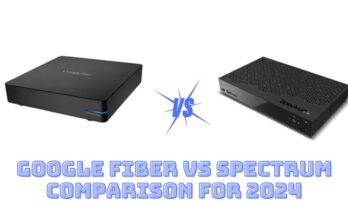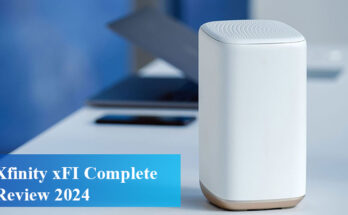In today’s digital age, having reliable and fast internet connectivity is essential. When it comes to choosing an internet service provider (ISP), two popular options are HughesNet vs. AT&T. Both offer different types of internet services, each with its own advantages and disadvantages.
In this article, we will compare HughesNet and AT&T in terms of prices, plans, and availability, helping you make an informed decision for your internet needs.
HughesNet vs. AT&T: Prices
One of the primary considerations when choosing an ISP is the price. AT&T’s DSL internet service stands out as a cost-effective option, priced at $55 per month. On the other hand, HughesNet’s satellite internet and AT&T Fixed Wireless services start at around $60 and $70 per month, respectively.
While AT&T may offer more affordable plans, HughesNet’s satellite internet has an advantage in terms of availability. Since satellite internet does not require underground cables or phone lines, it can serve even the most remote locations. HughesNet is known for being more budget-friendly compared to other satellite internet providers.
Let’s take a closer look at the prices and plans offered by HughesNet:
| 15 GB | $64.99/mo. | 25 Mbps | 15 Mbps |
| 30 GB | $74.99/mo. | 30 Mbps | 25 Mbps |
| Fusion 100 GB | $99.99/mo. | 100 Mbps | 25 Mbps |
| Fusion 200 GB | $174.99/mo. | 200 Mbps | 25 Mbps |
One notable drawback of HughesNet is its low data caps and relatively slow download speeds. With speeds ranging from 15 to 50 Mbps, the lower-tier plans may be suitable for individuals or small families with minimal internet usage. However, if you rely on the internet for work or have children enrolled in distance learning, these speeds and data caps may prove insufficient.
HughesNet does offer the option to add more data to your plan, but this comes at an additional cost.

25 Mbps and 40GB starting at:
$64.99/mo.
- Provider: HughesNet.
- Download speeds up to 25 Mbps
In contrast, AT&T DSL internet is an attractive option due to its more affordable price, larger data cap, and faster speeds. The AT&T Internet plans offer download speeds of up to 75 or even 100 Mbps, making them suitable for a wide range of internet activities.
It’s worth noting that the AT&T Internet 100 plan is a DSL-fiber hybrid, and availability may be limited in rural areas.
Here are the promotional prices and details for AT&T DSL internet:
| Plan | Price | Download speed | Data cap |
|---|---|---|---|
| AT&T Internet up to 75 Mbps | $55/mo. | 75 Mbps | Unlimited |
| AT&T Internet up to 100 Mbps | $55/mo. | 100 Mbps | Unlimited |
It’s important to note that the actual speeds you receive with AT&T DSL internet may vary depending on your location. Some areas may experience speeds as low as 6 Mbps, which can be frustrating for activities like web browsing.
If AT&T offers speeds below 25 Mbps in your area, it may be worth considering HughesNet or checking if AT&T Fixed Wireless is available.
The AT&T Fixed Wireless plan offers a different alternative with its own set of advantages. While the download speeds may not be as impressive as other options, with a minimum of 10 Mbps and an average of around 25 Mbps, the plan includes a generous data cap of 350 GB per month.
This makes it suitable for moderate internet usage. Additionally, AT&T Fixed Wireless prices include the equipment in the monthly bill, unlike HughesNet, which charges a separate fee for renting its satellite dish receiver.
Here are the promotional prices and details for AT&T Fixed Wireless:
| Plan | Price | Download speed | Data cap |
|---|---|---|---|
| AT&T Fixed Wireless | $59.99/mo. | 25 Mbps | 350 GB |
It’s worth considering AT&T Fixed Wireless if you prioritize a larger monthly data cap and don’t require extremely high download speeds.
How Does AT&T Fixed Wireless Internet Work?
To better understand AT&T Fixed Wireless, let’s take a closer look at how it functions. AT&T Fixed Wireless utilizes an antenna attached to your home or another building on your property. This antenna communicates back and forth with a fixed wireless hub located on a nearby tower.
To maintain a reliable fixed wireless signal, you need a clear line of sight from your antenna to the tower. Compared to satellite internet, which relies on satellites in Earth’s orbit, fixed wireless offers lower latency due to the shorter distance between your home and the tower. If you want to learn more about fixed wireless internet, you can refer to our comprehensive fixed wireless internet guide.
Availability: HughesNet vs. AT&T Internet
When it comes to availability, HughesNet satellite internet is technically accessible anywhere in the United States, as long as you have a clear view of the southern sky. However, it’s important to note that satellite capacity can sometimes be limited, and new subscribers may be unable to join.
On the other hand, AT&T Internet is available in 21 different states, primarily in the Midwest and Southern regions of the United States.
Please note that availability may vary within each state, and it’s essential to check whether AT&T Internet is available in your specific area.
Conclusion
Choosing the right internet service provider is crucial for a seamless online experience. When comparing HughesNet and AT&T, it’s important to consider factors such as prices, plans, and availability.
While AT&T’s DSL internet offers more budget-friendly options with higher speeds and larger data caps, HughesNet’s satellite internet is known for its widespread availability in even the most remote locations. Additionally, AT&T Fixed Wireless provides an alternative with moderate speeds and a generous data cap.
Ultimately, the choice between HughesNet and AT&T will depend on your specific needs and location. We recommend thoroughly researching the options available in your area and comparing the plans and features to make an informed decision.




